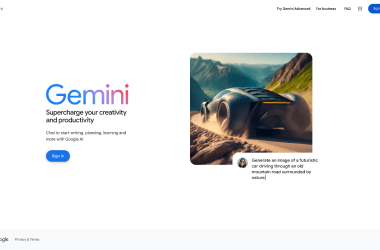Updated: Nov 01, 2024 By: Marios

The success of your website is determined by its performance. Users expect fast-loading access to information, but if your site takes more than two seconds to load, you lose about 40% of your visitors. WordPress is flexible and feature-rich, but it can become sluggish without proper optimization.
This means you should strategically boost speed and efficiency to make browsing smooth, keep visitors, and build a more substantial online presence. Here are a few ways WordPress could be optimized for better performance.
1. Choose a Reliable Hosting Provider
Your choice of a reliable web hosting service provider is the building block of a high-performing WordPress site. Your host determines your site's speed, uptime, and overall performance. It’s important to hire a hosting company that focuses on WordPress and has an excellent infrastructure. Inquire if the hosts offer solid-state drives (SSDs) and content delivery networks (CDNs).
You should also find a well-managed WordPress host if your budget allows it. Typically, managed hosts take care of technical aspects such as security updates, backups, and performance optimization while you concentrate on your content and business.
They have experts who can efficiently deal with the problems and guide you where necessary. All these will contribute towards setting up a strong foundation for your website’s performance, opening up methods for optimization based on your requirements.
2. Optimize Images and Media
Optimizing images and media can improve the performance of your WordPress website. Larger files that are not optimized may dramatically slow down pages, making visitors unhappy and hurting search engine rankings. Modern technology can help you compress photos while still maintaining quality. For instance, ShortPixel or Smush resize and compress images automatically when uploading them to guarantee suitable file sizes for the website.
Next, you should consider applying lazy loading to your media content. This technology allows your site to load pictures or videos whenever required, reducing the time for a page to open. WordPress also comes with native lazy loading designed for images, although there are plugins like A3 Lazy Load that add this feature functionality to other types of media.
3. Use Caching Plugins
Using caching plugins is a powerful way to improve the speed and efficiency of your WordPress site. Caching entails saving static versions of your web pages and displaying them to visitors rather than dynamically generating pages for every request.
This procedure dramatically reduces server load, decreasing page load times. Popular caching plugins like WP Rocket or W3 Total Cache have advanced options in addition to basic caching, such as minifying CSS and JavaScript files and CDN integration.
When choosing a caching plugin, it is important to evaluate your current website’s performance, user experience, and design. For professional and responsive websites, you can hire the Connective team, best known for top website design services. The company also assists clients in website marketing and development, ensuring you get a WordPress site with the right caching plugins for faster loading.
You can also establish how fast your site loads through GTmetrix or PageSpeed insight tools. Then install your preferred cache plug-in and see what happens. Fine-tune the settings to strike the perfect balance between performance improvements and keeping functionality on your site intact.
This can result in a faster, responsive WordPress website that will keep its audience engaged, leading to higher search engine rankings.
4. Deactivate All Unused Plugins
WordPress sites have over 59,000 free and paid plugins. These plugins are essential in loading code when people visit your page. The more plugins your site has, the more code it has to load and the more data your site has to process each time someone visits it.
While all these plugins can improve the functionality of your WordPress site and simplify various processes, too many inactive plugins can slow down the performance of your page.
Deactivating any plugins that you may not need again can improve your site’s performance. After each deactivation, test your site to see if it runs properly without the plugins and start deleting the inactive plugins one by one to see the difference. You can also install lightweight and high-quality alternatives to the deleted plugins, focusing on quality rather than the quantity of your site's plugins.
The good thing is that if you are hosting your site with wordpress.com, you won’t need to install plugins for the following functions since they are installed by default, giving you an optimized site on the go.
- Backups
- Security and secure sockets layer(SSL)
- Site speed, caching, and optimization
- Database management
- Spam protection
- Site resets
5. Use a High-Quality WordPress Theme
WordPress users can access an array of themes in the WordPress Theme Directory, each with unique features app and functionalities. However, like plugins, a theme you choose for your site can impact its speed or performance. That is because some themes require a lot of code to function well, while others could be programmed inefficiently, inflating your file sizes and slowing down your page.
While it is tempting to choose a fancy theme, the goal is to go for a lightweight, high-quality theme with ideal features app for your site. You can always customize your theme later to suit your site’s aesthetic by adding plugins and a Cascading Style Sheet(CSS). However, when choosing a WordPress theme for your site, consider its functionality, user reviews, support options, and available updates.
6. Install WordPress Updates
WordPress updates are a part of your site’s life, and installing them when they are available secures your site, helps patch bugs, and ensures everything runs smoothly. Whether it is your WordPress core, theme, or plugins, using the latest versions can improve your site’s performance and enhance user experience. One essential WordPress aspect that you should also always keep up to date is the Hypertext Preprocessor(PHP)
Hypertext Preprocessor(PHP) is the open-source, server-side scripting language that powers all WordPress websites. PHP releases occasional updates to improve the efficiency of WordPress pages, and its latest version is PHP 8.3.13, released on October 24, 2024.
Unlike PHP 7, PHP 8.3.13 is a significant update with new exciting features app and performance enhancements, such as a Just-In-Time (JIT) compiler that allows it to handle heavy workloads.
However, while updating your PHP can speed up code execution and site performance, always check if the updates are compatible with your site before installing. You can also ask your professional website designer or host to update your site.
7. Optimize Your Content and Comments
If you are not satisfied with your site’s load time and performance even after implementing the above steps, it might be time to optimize your content and comments. You can start by splitting long-form posts into multiple parts or pages to shorten the processing period. Remember, lengthy posts with high-volume media can take time to load; breaking them can improve their readability and overall site performance.
WordPress sites load the comments section the same way they load the main content. If you have an active comment section, your page can take time to load and display your content and readers’ comments or feedback.
You can speed up load time by paginating comments and giving the original page less content. Alternatively, you can introduce a button that allows readers to load comments only if they want or turn off the comment section to save on load time.
Endnote
WordPress optimization is an ongoing process with significant gains. By following these strategies, you can create a more efficient, high-speed website that will satisfy your customers and improve your online presence. You should also monitor your site proactively, considering technological advancements.



